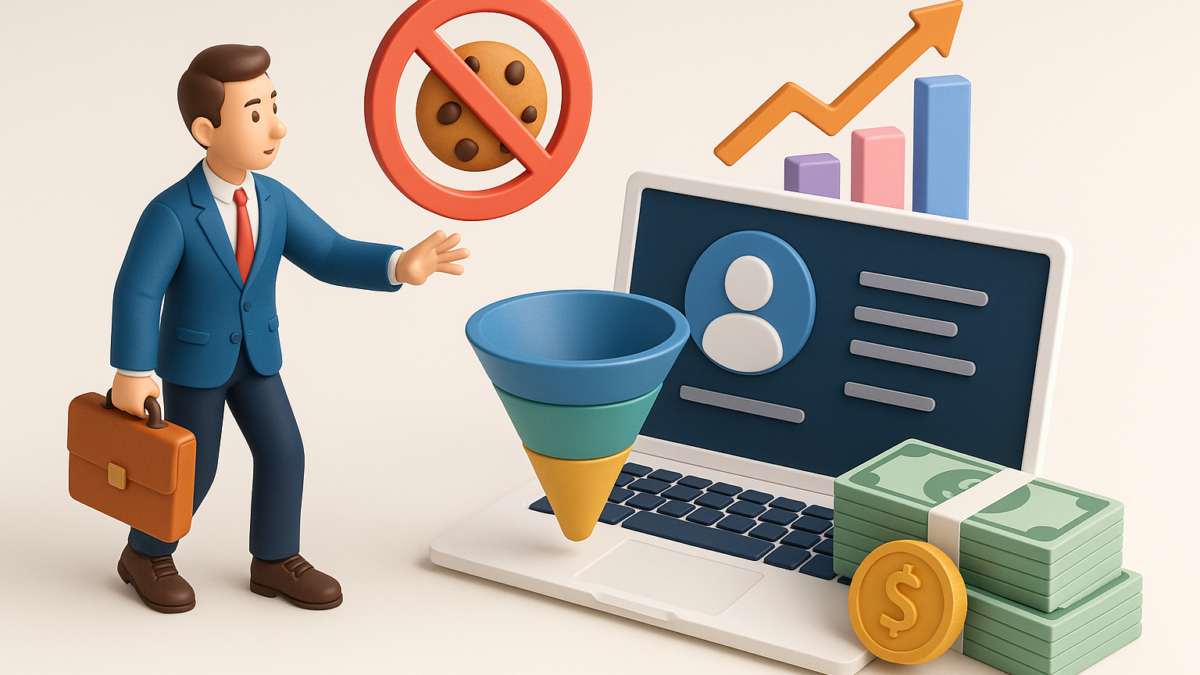The Cookieless Future of B2B: Winning Leads Without Tracking Pixels
For over a decade, B2B marketers have relied on third-party cookies and tracking pixels to gather data, retarget prospects, and measure campaign performance. But with Google phasing out third-party cookies in 2025 and stricter privacy regulations like GDPR and CCPA, the cookieless era has arrived.
This shift has sparked a big question: How can B2B businesses generate leads effectively without tracking pixels?
The answer lies in building privacy-first strategies, leveraging first-party data, and rethinking how we engage buyers across digital touchpoints.
What Does a Cookieless Future Mean?
A cookieless future doesn’t mean the end of digital marketing. It means:
- Third-party cookies (data collected by external platforms) will disappear.
- First-party data (information you directly collect from your audience) will become critical.
- Marketers must find new ways to personalize without invading privacy.
For B2B, this shift is an opportunity to build trust-based relationships instead of relying solely on digital surveillance.
Why the Change Matters in B2B Marketing
1. Buyer Trust & Transparency
Decision-makers expect brands to be transparent about how data is collected. A cookieless approach can enhance credibility.
2. Longer B2B Sales Cycles
With multiple stakeholders involved, lead nurturing becomes more complex. Businesses must adopt intent-based strategies that don’t depend on cookies.
3. Compliance & Regulation
Non-compliance with privacy laws can mean hefty fines. Going cookieless future-proofs your compliance strategy.
Winning Leads Without Tracking Pixels: A Step-by-Step Guide
Step 1: Double Down on First-Party Data
- Use gated assets like whitepapers, case studies, and webinars.
- Collect insights via progressive profiling on forms.
- Encourage newsletter subscriptions for continuous engagement.
Step 2: Leverage Contextual Targeting
Instead of following people around the internet, place content where it’s most relevant.
- Example: Ads for cloud security software in IT journals.
- Benefit: Buyers see your message in the right context, boosting relevance and trust.
Step 3: Build Private Communities
Create or join invite-only industry groups where professionals share insights.
- Example: Slack groups, proprietary forums, or LinkedIn private circles.
- Advantage: Authentic conversations lead to organic lead generation.
Step 4: Embrace Account-Based Marketing (ABM)
ABM allows you to target specific accounts rather than individuals.
- Use firmographic data (industry, revenue, company size).
- Create custom experiences like industry-specific reports or webinars.
Step 5: Optimize for Search & Intent Signals
Since cookies won’t track user behavior across sites, SEO and intent signals will matter even more.
- Focus on long-tail keywords aligned with “problem-solving” searches.
- Monitor engagement metrics like downloads, webinar signups, and demo requests.
Step 6: Invest in Privacy-First Tech
Explore tools that support cookieless measurement, such as:
- Google’s Privacy Sandbox
- Server-side tracking
- AI-driven analytics for lead scoring without cookies
Real-World Example
A B2B SaaS provider shifted from cookie-based retargeting to first-party engagement by launching an industry insights hub. By offering gated research reports and webinars, they collected 5,000+ new contacts in six months—without a single third-party cookie. Conversion rates improved by 32%, proving that trust-driven strategies can outperform pixels.
Key Benefits of Going Cookieless in B2B
- Stronger Buyer Relationships built on transparency.
- Higher Lead Quality through intent-driven content.
- Future-Proof Marketing aligned with global privacy regulations.
- Better ROI as personalization becomes more precise and data is owned, not rented.
Internal Resource
Want to future-proof your lead generation strategy? Check out our B2B Lead Generation Services and learn how we help businesses win leads in a privacy-first digital world.
Conclusion
The cookieless future isn’t a threat—it’s an opportunity to rethink B2B marketing. By prioritizing first-party data, contextual targeting, ABM, and community-driven engagement, businesses can win quality leads without relying on tracking pixels.
👉 Ready to thrive in a cookieless future? Connect with our experts today and discover how to turn privacy challenges into a competitive advantage.
You May Also Like: The Future of White Papers: Trends and Innovations in B2B Content Marketing





